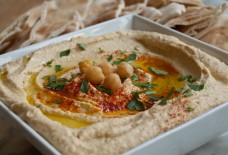From Lebanon to Minas Gerais
São Paulo – From religion to cuisine, including architecture. According to the artist Ronaldo Auad, these are the primary influences of Lebanese culture in Brazil’s Minas Gerais state. A descendant of Lebanese grandparents, born and raised in the Minas heartland, Auad has converted his impressions and family memories into the exhibition Minas-Líbano: Nágila e outras presenças (Minas-Lebanon: Nagila and other presences), showing from November 8th to December 5th in the city of São Paulo.
“There are Syrian-Lebanese colonies in most of the state’s heartland. I have always noticed a direct connection with [local] religiosity on their part, in adopting Catholicism and becoming involved with the state’s immaterial culture, such as its cuisine,” says Auad on how he sees the intermingling of the cultures of Minas and Lebanon.
Auad explains that over time, these influences came to inspire his work, and that within his own field, the arts, he also sees Arab features in baroque Minas Gerais items, for instance. According to him, the golden colour and twisting shapes of local baroque are influenced by Islamic art.
Using with materials such as wax, gypsum, limestone, charcoal and fabric, among others, Auad creates two- and three-dimensional artworks that provide his take on the Lebanese influence in the Minas Gerais lifestyle.
His great-aunt Nagila, whom he never met, is a towering figure in Auad’s personal story and a major source of inspiration in his work. “I became aware of her image through childhood pictures. The ghost of the Arab feminine figure has lingered with me since,” he says.
Auad explains that he uses photos of his great-aunt in his work, and also uses her image to work on objects that are allusive to her but bring something new. “My work is not a duplication of reality. These are new presences in space,” he says.
And since Arab influence is also strong in the rest of Brazil, what is so unique about this culture in Minas Gerais? To Auad, the architecture of some of the houses boasts a distinctive Middle Eastern influence.
“I have realized that a few country homes are built in an eminently Arab way. The living rooms have walls with latticework windows facing other rooms. As far as I know, this harks back to Arab tradition, where, when the homeowner had a visit, his wife did not enter the living room; she just looked through the window instead,” he explains.
If you are interested in seeing more of Auad’s perspective on the Lebanese features of Minas Gerais, check out his 30-piece exhibition in São Paulo. Presently, the pieces are showing at Instituto Moreira Salles in Poços de Caldas, Minas Gerais.
Aurea Santos
Brazilian-Arab News Agency



